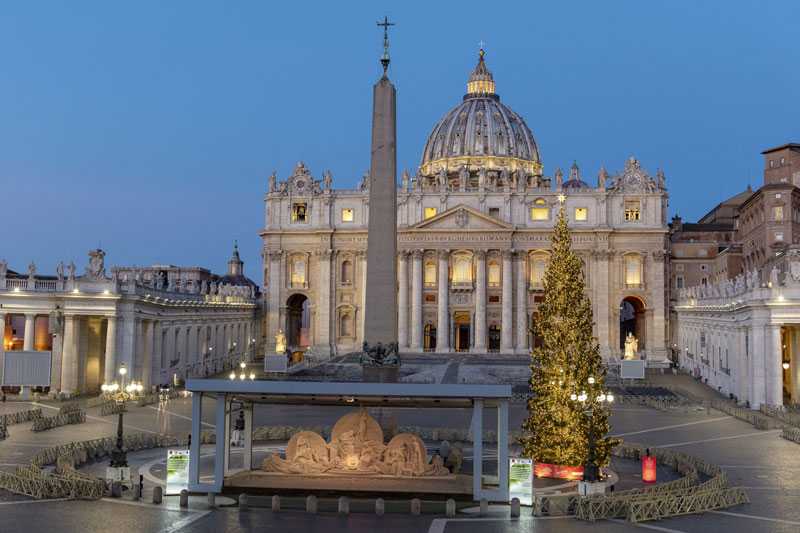Claypaky lights nativity in St Peter's Square
- Details

The nativity scene was donated by the Municipality of Jesolo, which has celebrated Christmas for the past 17 years with Jesolo Sand Nativity, an exhibition of nativity scenes made from sand by artists from all over the world. So, when a large box of compressed sand was placed in the middle of one of the most famous square in the world at the end of November, everyone knew that St. Peter would be playing host to an extra guest this year.
The work was created by a team of artists, who gradually shaped the block of sand to create a true three-dimensional sculpture. The nativity scene is housed in an aluminium casing with power-driven curtains that protect the sculpture from the elements.
Architect Carlo Tagliapietra looked into many possible ways of illuminating the work with different types of light. In the end, he chose Odeon Flood units made by Claypaky. Thanks to the Odeon’s dynamic white light mode, Tagliapietra was able to select the best kind of light to blend with the colour of the sculpture.
Eight Mini RGBW Odeon flood units with a 25° beam angle were used to illuminate the nativity scene in St. Peter's Square from above, and a 15° beam angle model was pointed at the crib. Accurate adjustment of the light intensity and precise crossing of the light beams gave volume and depth to the sculpture.
The project was developed by Osram through its Claypaky brand, and supervised by architect Carlo Tagliapietra with the support of the Technical Services Department of the Governorate of the Vatican City State. The creative team worked hard to reduce the shadows produced by the 3D sculpture in the bas-relief areas.
During the programming stage, Carlo Tagliapietra and Massimiliano Biava, Claypaky's project manager for the architectural line, regarded the sculpture as consisting of three conceptual sections. They kept the colour temperature constant in the middle for the crib and used a warmer white on the other sections. Ten second dynamic white lighting cycles from 3200 K to 4000 K were set up using a special control system.
Riccardo Garbuio from Arcadia Digital provided valuable support during the rigging and programming stage. Such a rare, unusual nativity scene inevitably aroused great interest among the thousands of visitors to St Peter's Square during the Christmas period, and received great media coverage worldwide. The sculptors highly appreciated the lighting, and defined it as: "the most effective we have ever been provided with to enhance our work".
(Jim Evans)
















